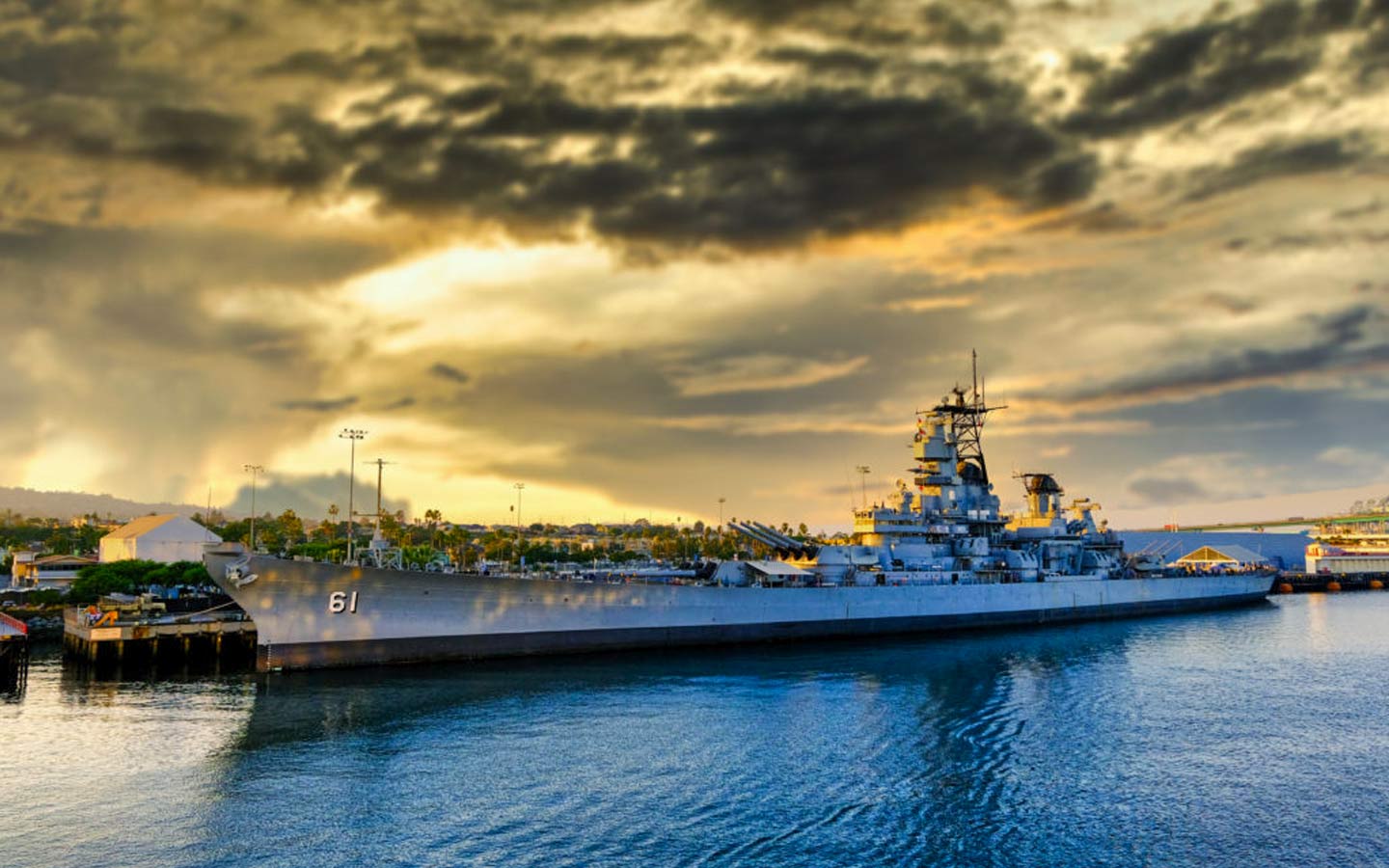Welcome Aboard USS Iowa
Explore one of the most powerful weapons of the past and experience naval history through fascinating permanent and temporary exhibitions, including a naval artifacts gallery and the Korean War-era HUP-2 helicopter.
USS IOWA represents the largest — and last — class of battleships built by the United States Navy. The IOWA class battleships served in every US conflict from World War II through the Gulf War in 1991.
Visit USS IOWA naval museum and experience a piece of living history.
Why is the battleship USS IOWA significant?
USS IOWA has a long and fascinating history. She was built as the lead vessel of the newest class of battleships, designed during the 1930s as the world was rapidly moving toward war. Commissioned in 1943, IOWA was used in both the Atlantic and the Pacific theaters during World War II.
One of the most significant events she took part in during the war was ferrying President Franklin D. Roosevelt and key military advisors to a top-secret meeting in North Africa with the leaders of the United States’ allies, Great Britain and Soviet Russia. At the end of the trip, the president gave a parting speech to the crew to inspire naval personnel who would go on to serve in important engagements in the Pacific.
The rise of aircraft meant the dwindling of the importance of battleships. As a result, no new battleships were built after World War II ended and the IOWA class proved to be the last.
After many years of service, IOWA was decommissioned for the final time in 1990. In 2012, she became a US Navy museum ship, the only naval museum on the West Coast to feature a capital ship that saw action in World War II.
Interesting fact: The navy’s history has seen four different ships that have had the name IOWA, including a new Virginia-Class submarine.
How long does it take to visit the museum?
Battleship IOWA is one of the most unique Los Angeles Museums. It’s worth a visit even if you don’t have a ton of time. But as you plan, how much time should you allow?
That depends on the type of visitor you are. Some people like to take their time, peek into every available nook and cranny, read every bit of text, and imagine what life aboard was like for the thousands of sailors who served on this venerable ship. If that’s you, plan several hours for your visit.
Others are up for adventures and want to explore areas like our engine rooms, gun turrets, and the historic captain’s cabin which has hosted the likes of Franklin Delano Roosevelt. You can have a fascinating visit and see a lot in an hour or two.
Battleship IOWA isn’t the only military museum Los Angeles has, by the way. If you’re into military history, you might enjoy a visit to one of the other Los Angeles military museums like the American Military Museum or the Fort MacArthur Museum.
What is a battleship anyway?
The term “battleship” is used to designate a large, armored warship with a main battery of large caliber, long-range guns. Battleships were the most important naval vessels from the late 1800s until WWII.
This type of ship had its origins during the US Civil War, when both the North and the South produced iron-clad warships. A famous naval battle just north of Norfolk, VA between the USS MONITOR and the USS MERRIMACK (rebuilt and renamed the CSS VIRGINIA by the South) demonstrated that existing wooden ships had become obsolete.
In 1869, the HMS MONARCH, built by Great Britain, became the first ocean-going iron-hulled battleship. One of the changes that began to show up on Civil War ships was the replacement of broadside guns pointing out of portholes in the side of the ship with guns mounted in swiveling turrets on the main deck. MONARCH embraced this change fully and represented the first truly modern warship.
From that point, battleships got bigger, faster, and sported guns with increasing range and caliber. USS IOWA, for example, was built with 9 16-inch guns that could fire 2,700 lb shells a distance of more than 20 miles with great accuracy. USS IOWA’s top speed was about 35 knots, roughly 40 miles per hour.
The first battleship built for the US navy was USS MAINE, constructed in the navy yard in New York City. The last, never finished, was KENTUCKY, whose construction came to an end in 1947 at the Norfolk Navy Yard. In total, the naval history of the U.S. includes the construction of 59 battleships of 23 different classes.
Are battleships still important in naval combat?
The United States Navy no longer has any battleships in its fleet. If you read the answer above about battleships, you’ll know that the last ones were built during WWII.
So why did this awesome naval weapon stop being used?
The answer has to do with the rise of naval aviation. Large ships like IOWA are vulnerable to attacks from above by aircraft. The experience of WWII demonstrated this dramatically when Japan’s YAMATO, the largest and most powerful battleship ever constructed, was sunk by allied aircraft in 1945.
During that war, the aircraft carrier was taking the place of the battleship as the most important naval vessel. That remains true today. Because of its size, an aircraft carrier is relatively vulnerable, which means ships that are a bit like a battleship but smaller in size — cruisers and destroyers — continue to have a role in providing protection as escorts in an aircraft carrier fleet.
How many US Navy ships are museums?
There is a large number of naval history exhibits around the country that feature ships from the United States Navy. The greatest number are ships from WWII. The oldest is the USS CONSTITUTION, whose construction began in 1797 and which is still a commissioned ship.
If you’re a fan of U.S. naval history, be sure to visit the National Museum of the United States Navy (or U.S. Navy Museum) the next time you’re on the East Coast. The flagship museum of U.S. naval history, it’s located in what used to be the naval gun factory, part of the facilities of the Washington Navy Yard in Washington, D.C.
The Washington Navy Yard, beginning in the early 1800s, was an important center of ship and gun production for the U.S. navy until ordinance and gun production ceased in 1961. The new national museum of the Navy, sometimes colloquially called the Naval Gun Factory Museum, was opened in 1963.
If you’re interested in maritime history beyond the military focus of a naval museum, Los Angeles also hosts the Los Angeles Maritime Museum.

About Pacific Battleship Center
Pacific Battleship Center, a reputable 501(c)3 non-profit, operates programs that focus on igniting curiosity, connecting communities, and enhancing understanding of America’s role in maritime peace and prosperity.
Pacific Battleship Center’s family of brands include Los Angeles’s Battleship IOWA Museum, National Museum of the Surface Navy, LA Fleet Week, Camp Battleship, Veteran’s West, and Vicky’s.
Support and Give
Battleship USS Iowa is a community platform leveraged for engaging and impactful programs. We focus our activities into three primary pillars: education, veterans, and community.
- Education programs and resources inspire future leaders.
- Veterans programs and resources empower those who served.
- Community programs and resources strengthen our community.
Support your favorite pillar today by donating or by becoming a volunteer.


























